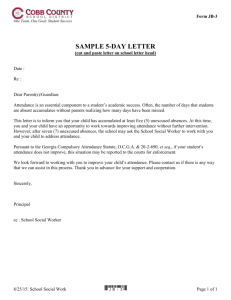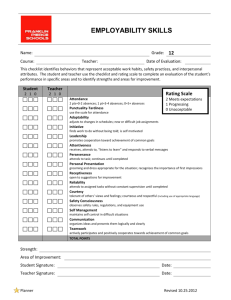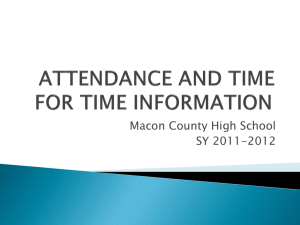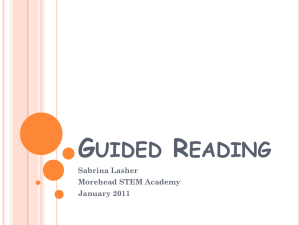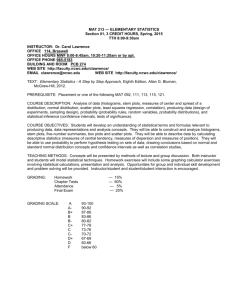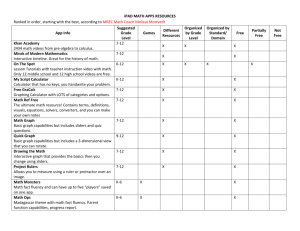Strength and Challenges of Students
advertisement
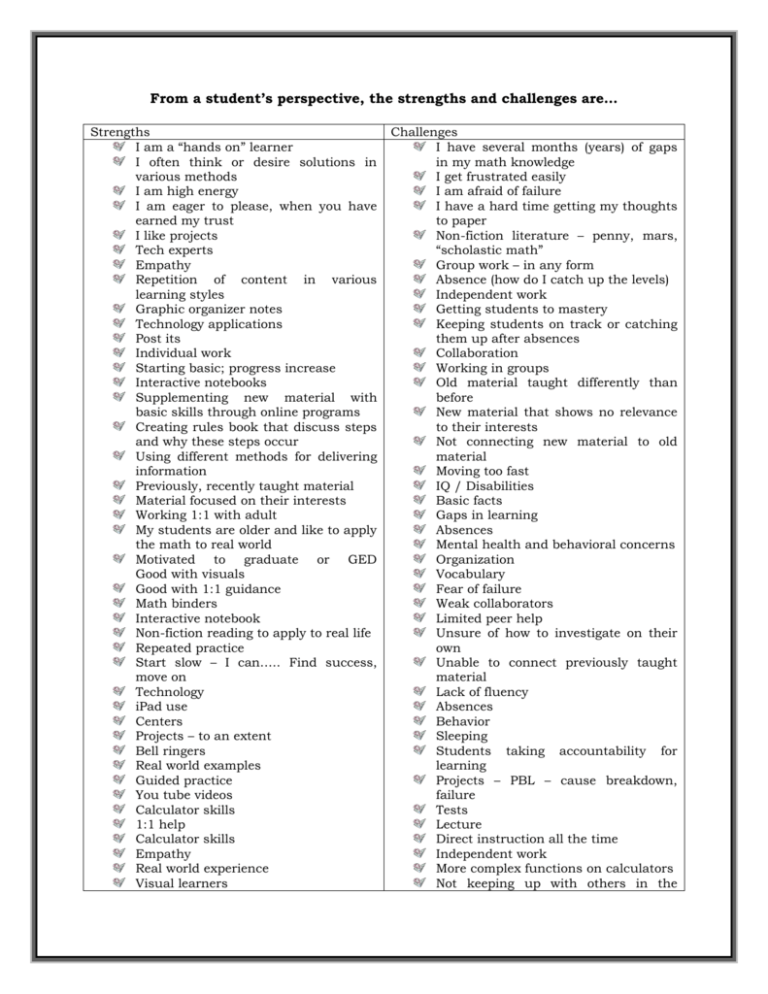
From a student’s perspective, the strengths and challenges are… Strengths I am a “hands on” learner I often think or desire solutions in various methods I am high energy I am eager to please, when you have earned my trust I like projects Tech experts Empathy Repetition of content in various learning styles Graphic organizer notes Technology applications Post its Individual work Starting basic; progress increase Interactive notebooks Supplementing new material with basic skills through online programs Creating rules book that discuss steps and why these steps occur Using different methods for delivering information Previously, recently taught material Material focused on their interests Working 1:1 with adult My students are older and like to apply the math to real world Motivated to graduate or GED Good with visuals Good with 1:1 guidance Math binders Interactive notebook Non-fiction reading to apply to real life Repeated practice Start slow – I can….. Find success, move on Technology iPad use Centers Projects – to an extent Bell ringers Real world examples Guided practice You tube videos Calculator skills 1:1 help Calculator skills Empathy Real world experience Visual learners Challenges I have several months (years) of gaps in my math knowledge I get frustrated easily I am afraid of failure I have a hard time getting my thoughts to paper Non-fiction literature – penny, mars, “scholastic math” Group work – in any form Absence (how do I catch up the levels) Independent work Getting students to mastery Keeping students on track or catching them up after absences Collaboration Working in groups Old material taught differently than before New material that shows no relevance to their interests Not connecting new material to old material Moving too fast IQ / Disabilities Basic facts Gaps in learning Absences Mental health and behavioral concerns Organization Vocabulary Fear of failure Weak collaborators Limited peer help Unsure of how to investigate on their own Unable to connect previously taught material Lack of fluency Absences Behavior Sleeping Students taking accountability for learning Projects – PBL – cause breakdown, failure Tests Lecture Direct instruction all the time Independent work More complex functions on calculators Not keeping up with others in the Willingness to try For some, they enjoy math, especially math in which they see tangible results. Technology they have available to them. Done in a systematic way Can use calculator – finally! Practical over longer periods of time for fuller understanding Relates to science / real world problems and ideas Technology at their fingertips Repetition Changing grouping of students in class Visuals Working together as a class to solve problems – “guided problem solving” Direct relevance to what we are working on at a given time How “know how to” do applied math will benefit them in their future Guided problem solving Use of technology I can see ways I can use this in real life I like Destination Math Can do work with me Partners (certain pairs) Showing them how to use resources (calculator) Specific – clear steps Simplify Visuals Visual representations Problem solving when it’s real world and it matters Having them talk through their answers STAR Math focuses students’ abilities Attendance Ability to follow a pattern Enjoy learning Know multiplication facts Motivated to do well class, don’t want to let others see that I don’t get it How will I use this in real life Getting along with my peers Balance all the seemingly irrelevant information with other subjects they are taking along with the even important social life. Language / vocabulary is difficult to understand Don’t have the basics Don’t care – hate math – fear or failure Why? Relevance and priorities Increasing absences create huge gaps Application of curriculum Working independently Upper level thinking – critical thinking of real world application at grade level Attendance – how do we catch them up? How do I teach fluency within the required curriculum Move students to more independence Where / how far I go back Takes me too long to do I don’t understand I don’t have my rote memorization Attendance Motivation Lecturing / copying notes Independent work Notes that require reading Groups Plan for absent students Multi-step problems (attention and focus) Theoretical (n sides to a shape) Vocabulary Attendance Carry over Gaps Focus and priorities Lack of reinforcing HW 2nd grade math level; 8th grade classroom curriculum. HW is not doable Independent is not happening Language of math problems Writing how to do problems When to apply operations, not comprehending the language of the task
